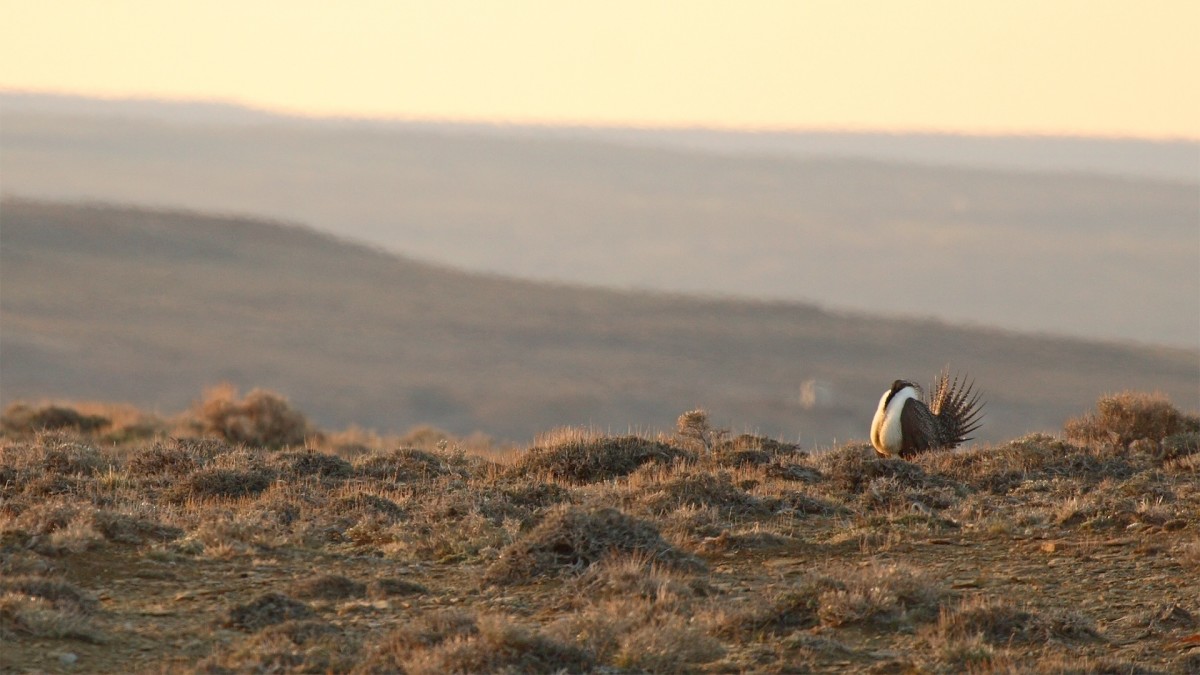
The Bureau of Land Management recently released a proposal that would increase protections for greater sage grouse in 10 western states.
The environmental impact statement analyzes six alternatives for sage grouse habitat management, and the BLM has decided to back the alternative that balances increased protections with the agency’s multiple-use mandate.
Before we get to what’s in the plan, you should know a thing or two about sagebrush habitat in the U.S. There’s tons of amazing work being done in these ecosystems, but it’s still not looking great. A 2022 report from the U.S. Geological Survey shows that a little over half of the original sagebrush ecosystem has been lost in our country. We’ve been losing this biome at a rate of approximately 1.3 million acres each year over the last two decades.
That’s not great for any species that rely on these ecosystems, and there are a ton of them, but greater sage grouse have been especially impacted. A local population may need up to 40 square miles of intact landscape to stay healthy. Populations once in the millions now number fewer than 800,000, largely due to habitat loss, according to the BLM.
A real long-term solution would be to pass something like the North American Grasslands Conservation Act, which we’ve covered several times over at “Cal’s Week in Review.” But if passing that bill isn’t possible in the current political climate, action from the BLM is a fine place to start.
That’s because the BLM manages the largest single share of sage-grouse habitat in the United States—nearly 67 million acres of the 145 million total acres are in the sagebrush habitat that these awesome birds need to survive. Increasing protections on BLM land could go a long way toward slowing the species' decline.
The draft plan offers a range of alternatives for managing these lands–everything from doing nothing to almost totally restricting other land uses in habitat management areas. As is usually the case with these environmental impact statements, the BLM has selected the alternative they prefer. Under this alternative, new fluid mineral leasing would remain open in so-called “Priority Habitat Management Areas.” These are areas the agency believes are especially important sagebrush habitat for the grouse.
Wind and solar development and major rights-of-way projects will also be considered if companies are willing to create habitat elsewhere to offset adverse impacts. However, new mining of saleable materials, which include construction materials such as sand, gravel, dirt, and rock, would be closed in most priority habitat areas, aside from the expansion of existing pits.
These measures would help sage grouse, but they would also help all the other species that rely on the same habitats. Mule deer are especially likely to benefit. A 2014 study found a high degree of overlap between areas in Wyoming with protections for grouse and migration and wintering areas of mule deer. They concluded that protecting sage grouse habitats doubled the conservation of lands used by migrating mule deer in this area of Wyoming.
“A continued commitment to the conservation of the greater sage-grouse is critically important to the health of our sagebrush ecosystems and other species that rely on that core habitat such as pronghorn and mule deer,” said Kaden McArthur, government relations manager, Backcountry Hunters & Anglers. “As intact sagebrush habitat on our public lands continues to decline, so do opportunities for sportsmen and women across the West.”
Of course, no plan is perfect, and you might not agree with everything in it. That’s why the BLM will hold 13 public meetings to answer questions and take further comments on the draft alternatives and analysis. You can also submit comments online.





Conversation